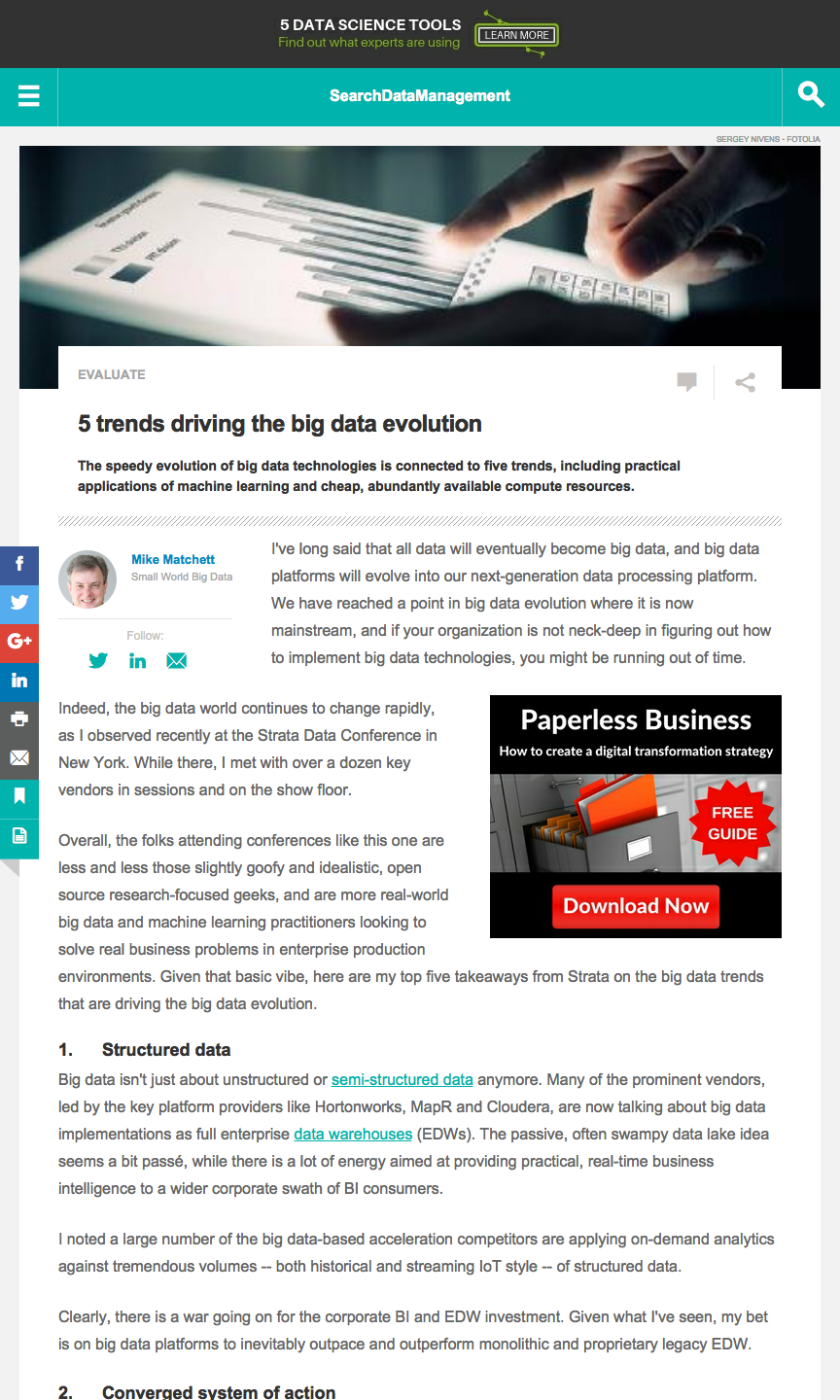5 trends driving the big data evolution

An IT industry analyst article published by SearchDataManagement.
 The speedy evolution of big data technologies is connected to five trends, including practical applications of machine learning and cheap, abundantly available compute resources.
The speedy evolution of big data technologies is connected to five trends, including practical applications of machine learning and cheap, abundantly available compute resources.
Mike Matchett
Small World Big Data
I’ve long said that all data will eventually become big data, and big data platforms will evolve into our next-generation data processing platform. We have reached a point in big data evolution where it is now mainstream, and if your organization is not neck-deep in figuring out how to implement big data technologies, you might be running out of time.
Indeed, the big data world continues to change rapidly, as I observed recently at the Strata Data Conference in New York. While there, I met with over a dozen key vendors in sessions and on the show floor.
Overall, the folks attending conferences like this one are less and less those slightly goofy and idealistic, open source research-focused geeks, and are more real-world big data and machine learning practitioners looking to solve real business problems in enterprise production environments. Given that basic vibe, here are my top five takeaways from Strata on the big data trends that are driving the big data evolution.
1. Structured data
Big data isn’t just about unstructured or semi-structured data anymore. Many of the prominent vendors, led by the key platform providers like Hortonworks, MapR and Cloudera, are now talking about big data implementations as full enterprise data warehouses (EDWs). The passive, often swampy data lake idea seems a bit passé, while there is a lot of energy aimed at providing practical, real-time business intelligence to a wider corporate swath of BI consumers.
I noted a large number of the big data-based acceleration competitors are applying on-demand analytics against tremendous volumes — both historical and streaming IoT style — of structured data.
Clearly, there is a war going on for the corporate BI and EDW investment. Given what I’ve seen, my bet is on big data platforms to inevitably outpace and outperform monolithic and proprietary legacy EDW.
2. Converged system of action
This leads into the observation that big data evolution includes implementations that host more and more of a company’s entire data footprint — structured and unstructured data together.
We’ve previously noted that many advanced analytical approaches can add tremendous value when they combine many formerly disparate corporate data sets of all different types…(read the complete as-published article there)
